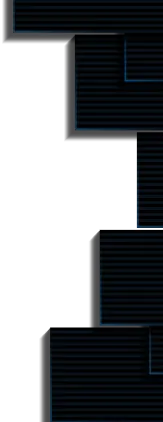What is Polkadot?
Parag

Polkadot is a next-generation blockchain protocol that connects an entire network of purpose-built blockchains, allowing them to function together smoothly at scale. Polkadot enables any form of data to be transferred across any type of blockchain, opening up a plethora of real-world use applications.
Polkadot opens the path for new decentralized markets to develop by combining the finest features from different specialized blockchains, enabling fairer ways to access services through a range of apps and providers.
Polkadot’s design has various advantages over existing and legacy networks, including heterogeneous sharding, scalability, upgradeability, transparent governance, and cross-chain composability.
Why is Polkadot important?
Polkadot is unique. It is regulated in a fair and transparent manner by anybody who owns DOTs, Polkadot’s native currency. All DOT holders have the ability to propose protocol changes or vote on current proposals. They can also assist in the election of council members who represent passive stakeholders in Polkadot’s governance structure.
Polkadot’s cross-chain composability and message passing enable shards to interact, trade value, and share functionality, ushering in a new era of creativity. Polkadot shards will be able to communicate with popular decentralized financial protocols and cryptoassets on external networks such as Ethereum thanks to Polkadot’s ability to connect blockchains.
Polkadot also has the advantage of being developer-friendly. Substrate, a modular framework that permits blockchains to be constructed to specification in hours, is used to build the bulk of parachains. Because the Relay Chain is built on Substrate, any blockchain built on Substrate may simply connect to the network.
How does Polkadot work?
The Polkadot platform employs a relay chain that employs a variant of the proof of stake consensus method. The DOT token grants validators voting power, allowing them to participate in project decisions and growth. Furthermore, the DOT token may be used to connect and incentivize validators to behave honestly in the network when they have a financial stake in the validity of the verification process.
This enables anybody who bets on DOT to block the token in a contract in order to perform one or more of the operations required for it to function:
- Validating roles:
They are in charge of validating the data in the parachain blocks. They also contribute to the network’s consensus and vote on suggested modifications. - Nominating roles:
They secure the relay chain by identifying trustworthy validators and delegate the DOT tokens they have staked to the validators. This is how they cast their ballots. - Collecting roles:
Nodes that keep a comprehensive record for each parachain and contribute data about the parachains transactions in blocks in order to add them to the relay chain. - Fishing roles:
They watch the Polkadot network and report inappropriate behavior to the validators.
The DOT Token
The DOT token performs three separate functions: network governance, staking, and bonding.
- Governance:
Polkadot token holders have total control over the protocol. All capabilities that miners have on other platforms will be granted to Relay Chain participants (DOT holders), including the ability to manage unusual occurrences like as protocol updates and repairs. - Staking:
According to game theory, token holders are incentivized to act honestly. This method rewards good actors while penalizing bad actors by removing their share in the network. This ensures the network’s security. - Bonding:
Bonding tokens create new parachains. By deleting bound tokens, outdated or ineffective parachains are eliminated. This is a type of stake proof.
What are the features of Polkadot?
- Heterogeneity:
All blockchains make various choices to enable certain features and use cases, and as chain specialization grows, so will the need to transact across them. Polkadot is a sharded blockchain, which means it links many chains in a single network, allowing them to execute transactions in parallel and exchange data with security assurances. Polkadot’s distinct heterogeneous sharding approach allows each chain in the network to be tailored for a specific use case rather than being compelled to conform to a one-size-fits-all paradigm. More chains and specialization equals more opportunities for innovation. - Scalability:
When the network is crowded, isolated Blockchains can only process a certain amount of traffic, resulting in bottlenecks.
Polkadot is a sharded multichain network that can process numerous transactions on several chains in simultaneously, avoiding the problems that plague conventional networks that process transactions sequentially. This parallel processing capability substantially enhances scalability, paving the way for increasing acceptance and future expansion. - Shared Security and On-chain Governance:
Polkadot allows numerous transactions to be completed in parallel by connecting multiple specialized chains into a single sharded network. This method eliminates bottlenecks that existed on previous networks that handled transactions one at a time. Polkadot will be able to grow even higher in the future because to a feature called nested relay chains, which will boost the amount of shards that can be added to the network. - Forkless Upgrades:
Upgrading traditional blockchains necessitates forking the network. Polkadot transforms this process by allowing blockchains to update themselves without the requirement for a fork in the chain. Polkadot’s transparent on-chain governance mechanism is used to carry out these forkless updates. Polkadot’s feature allows projects to remain nimble, changing and growing in tandem with the pace of technology. It also greatly decreases the possibility of controversial hard forks, which may be a significant barrier to admission for many companies. - Interoperability:
It is obvious that the future of web3 is based on intercommunication among all ecosystems. This is the only way to optimise the network effect and drive widespread adoption.
Polkadot accomplishes interoperability through two primary means:
- Internal interoperability: The relay chain will offer internal interoperability between parachains. This is feasible because all parachains and parathreads (described further down) communicate in the same language.
- External interoperability: This will be accomplished through the use of customised parachains known as bridges. The bridges connect two separate blockchains.
What are Parachains & Parathreads?
While the relay chain is permanent, parachains can disconnect and reconnect to the network at any time. The link is formed on a subscription basis, similar to how you pay Netflix on a monthly basis to access its data.
Parachains:
Parachains are self-contained blockchains that are hosted on the Polkadot platform. These customised blockchains are designed to accomplish specific goals and handle distinct difficulties. They use Polkadot’s computer capabilities to check the correctness of network transactions. While leveraging Polkadot’s shared security feature, parachains are given the option to create their own governance structures. Projects must lease a slot on the Relay Chain through a slot auction in order to run a parachain on Polkadot.
Parathreads:
Parathreads operate on a pay-as-you-go basis. Parathreads are blockchains that must be woken up and operated on a less frequent basis. With a few exceptions, parathreads have the same functionality as parachains. Parathreads are parachains that are created on a pay-as-you-go basis rather than by leasing a slot. Parathreads are best suited for tasks that do not require constant network connection.
How is Polkadot different from Ethereum?
Given that they both have a high-profile creator, there has been much discussion regarding what distinguishes Polkadot from Ethereum.
Polkadot and the upcoming significant upgrade to Ethereum, known as Ethereum 2.0, have numerous architectural and operational similarities. Both networks run a primary blockchain where transactions are completed and allow the development of numerous subsidiary blockchains that use its resources. Both methods rely on staking rather than mining to maintain the network in sync.
Ongoing research is being conducted to determine how transactions between networks may be made interoperable. Parity, for example, has created technology for customers who want to deploy apps that leverage Ethereum’s code and ecosystem yet operate on Polkadot.
Finally, developers may utilize Polkadot’s development framework to create a replica of the Ethereum blockchain for usage in their own bespoke blockchain designs.
Polkadot FAQs
1. When did Polkadot launch?
On May 26, 2020, the Polkadot network’s Genesis block was published as a Proof of Authority (PoA) network, with governance managed by a single Sudo (super-user) account. Validators began entering the network and indicating their desire to participate in consensus during this time.
2. What are some of the Polkadot use cases?
Polkadot parachains have a wide range of use cases, including transaction chains, oracle chains, identification chains, file storage chains, data curation chains, IoT chains, finance chains, and privacy chains.
3. How many chains can Polkadot connect?
There is no set limit to the number of chains that may be linked to the Polkadot network, which is designed to be scalable. Initial projections indicate that the basic Polkadot design will be capable of handling dozens, if not hundreds, of parachains.
4. Risks associated with DOT
- The inflation model will result in significant erosion of DOT percentage holdings for passive players.
- The nature of the legal relationship between DOT holders is unknown.
- DOT’s regulatory status is unknown.
5. Is it possible to link multiple Ethereum addresses to a single Polkadot account and can I claim my DOT to two different Polkadot accounts?
Yes, Simply repeat the process for each Ethereum address, always using the same Polkadot account and No, one Ethereum address can only claim one Polkadot account.
Resources
https://polkadot.network/Polkadot-lightpaper.pdf
https://polkadot.network/blog/what-is-polkadot-a-brief-introduction/
https://finance.yahoo.com/news/polkadot-151611181.html





Subscribe to receive Alpha!
Join 4.3k subscribers from renowned companies worldwide and get a weekly update in your inbox. Stay updated on the latest and finest projects and product updates.

